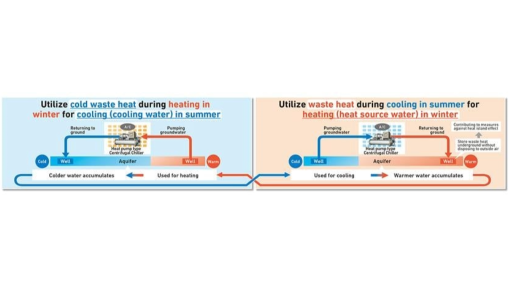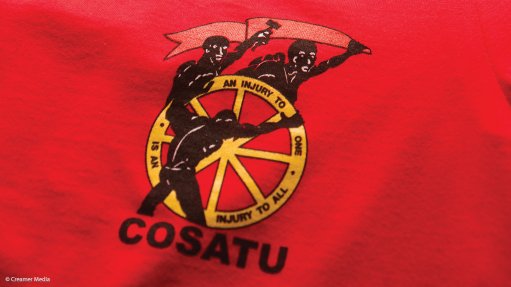Ramaphosanomics
It is said that many a truth is spoken in jest. I contend that restricting the adage to ‘spoken’ might well be dated. A few years ago, I co-authored a chapter in the book Zumanomics. With a change of guard at the Presidency anticipated, I consulted my favourite search engine for references to Ramaphosanomics. Google returned 45 900 results in all of 0.57 seconds. No results were found for ‘ramaphosanomics’; instead, it showed results for ‘ramaphosa comics’.
Although a change in leadership is anticipated, I get the sense that it is not imminent. This time of anticipation reminds me of Dr Frank-N-Furter, of the Rocky Horror Picture Show, wanting to appease his captivated audience: “So come up to the lab and see what’s on the slab; I see you shiver with anticipation; But maybe the rain isn’t really to blame; So, I’ll remove the cause but not the symptom.”
If anything, the rain is not to blame. Rather the lack of it is. Well, in part. It would also not be enough to remove the cause. The symptom – rather, symptoms – should be removed.
What lies at the heart of South Africa’s challenge? Could it be multiple causes? What should be on the slab? “It’s the economy, stupid” (adapted from “The economy, stupid”, which was coined during Bill Clinton’s successful 1992 US Presidential campaign). Alas, the economy does not tend to feature in South African political campaigns.
If the economy is not your thing, I do commiserate with your pain of South Africa’s sporting prowess or, rather, its diminishing prowess. Minutes before sitting down to write this column, I watched what I thought to be the highlights of South Africa’s second One Day International against India, only to find that the 118 runs – South Africa’s lowest on home turf – accumulated in all of 32.2 overs of its allotted 50 overs, was the full innings.
But it is not only on the sports field that South Africa is failing to accumulate a score of any real significance. The economy is anything but performing. City Press reported recently that South Africa’s Budget deficit had grown to a record R195-billion. This number is only truly impactful when it is expressed as R195 000 000 000. The widening Budget deficit is due to tax revenue lagging persistently increasing government spending.
Even more worrying is government’s inclination to revert to borrowing. Lost is William Shakespeare’s wisdom of “Neither a borrower nor a lender be.” The Public Investment Corporation (PIC), the quasi-public investment entity, has just agreed to grant a short-term loan of R5-billion – that is R5 000 000 000 – to keep the struggling Eskom afloat. Of grave concern, the PIC, on behalf of the Government Employees Pension Fund, advanced the R5-billion bridging facility to fund Eskom’s operations for the month of February. Yes, pension money. Sounds familiar? It reminds me of the tagline in the trailer of the 1987 movie, The Fly: “Be Afraid, Be Very Afraid.”
From April 2016 to November 2016, government spent R893.7-billion, up 6.2% on 2015, while tax revenue increased by 4% to R698.7-billion. According to City Press, it is projected that the South African Revenue Service will miss its initial 2018 tax revenue target of R1.27-trillion, set during the 2016 Budget speech, by almost R51-billion.
Evidently, government will not be decreasing its expenditure, including ‘unexpected expenditure’, any time soon. Under ‘unexpected expenditure’ lurks free tertiary education, announced in December.
If anything, the international ratings agencies will be closely monitoring how government intends to meet its increasing self-inflicted expenditure obligations. They will be interested in the articulated plans, underpinned by commitment, to see exactly how government intends to grow the South African economy and reduce its expenditure and its debt.
In 2016, government’s debt-to-gross- domestic-product ratio, an indicator of the country’s economic health, was 51.7%, while, in 2008, the ratio was 27.8%. It more than doubled during the Zuma Presidency. These are troubled times for the South African economy. All this begs the question: What are President-in-Waiting Cyril Ramaphosa’s economic priorities?
Comments
Announcements
What's On
Subscribe to improve your user experience...
Option 1 (equivalent of R125 a month):
Receive a weekly copy of Creamer Media's Engineering News & Mining Weekly magazine
(print copy for those in South Africa and e-magazine for those outside of South Africa)
Receive daily email newsletters
Access to full search results
Access archive of magazine back copies
Access to Projects in Progress
Access to ONE Research Report of your choice in PDF format
Option 2 (equivalent of R375 a month):
All benefits from Option 1
PLUS
Access to Creamer Media's Research Channel Africa for ALL Research Reports, in PDF format, on various industrial and mining sectors
including Electricity; Water; Energy Transition; Hydrogen; Roads, Rail and Ports; Coal; Gold; Platinum; Battery Metals; etc.
Already a subscriber?
Forgotten your password?
Receive weekly copy of Creamer Media's Engineering News & Mining Weekly magazine (print copy for those in South Africa and e-magazine for those outside of South Africa)
➕
Recieve daily email newsletters
➕
Access to full search results
➕
Access archive of magazine back copies
➕
Access to Projects in Progress
➕
Access to ONE Research Report of your choice in PDF format
RESEARCH CHANNEL AFRICA
R4500 (equivalent of R375 a month)
SUBSCRIBEAll benefits from Option 1
➕
Access to Creamer Media's Research Channel Africa for ALL Research Reports on various industrial and mining sectors, in PDF format, including on:
Electricity
➕
Water
➕
Energy Transition
➕
Hydrogen
➕
Roads, Rail and Ports
➕
Coal
➕
Gold
➕
Platinum
➕
Battery Metals
➕
etc.
Receive all benefits from Option 1 or Option 2 delivered to numerous people at your company
➕
Multiple User names and Passwords for simultaneous log-ins
➕
Intranet integration access to all in your organisation


















